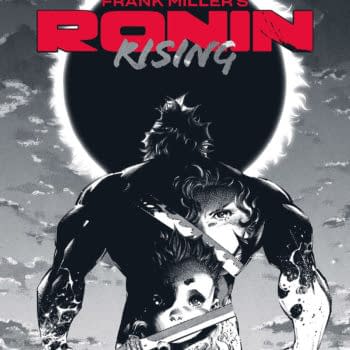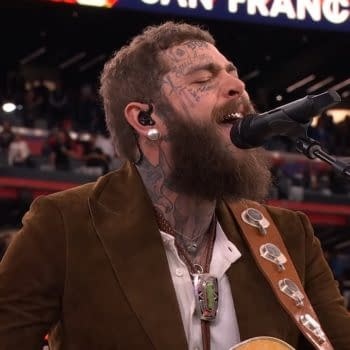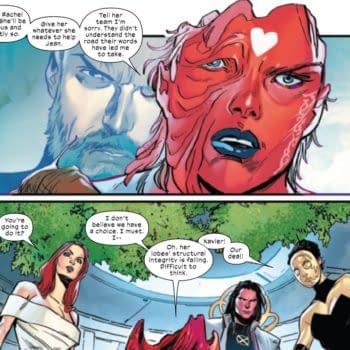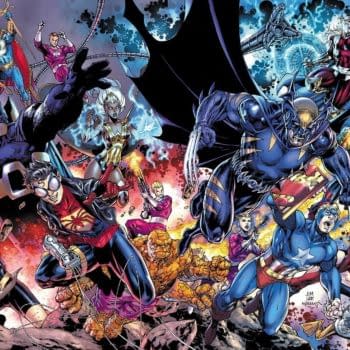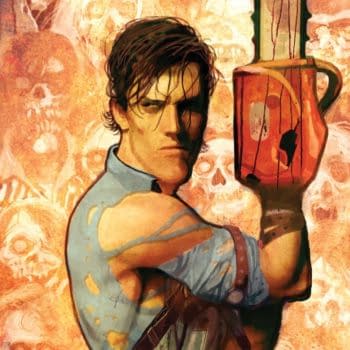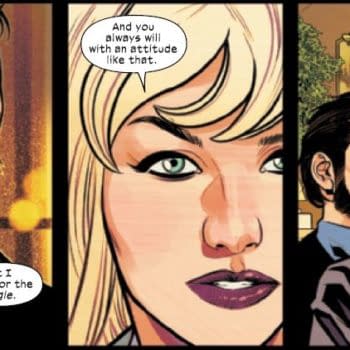Posted in: Recent Updates | Tagged:
Pond Life #4 by Martin Conaghan – Art For Art's Sake

But I know a man who is…
Ian Sharman is an experienced comic book writer and artist living and working in the UK. He founded Orang Utan Comics with Peter Rogers in 2006 and functions as managing editor for the indie publisher. He has a wealth of published credits as writer, inker, colourist and letterer – including a major role in the creative team that produces Alpha Gods – and has worked with a number of publishers including Slave Labor, Top Shelf, Image and Marvel/Panini and also serves as group editor for AAM/Markosia.
And he also plays the guitar.

"The biggest problem is that people look at the worst comic art out there and think 'well, I'm better than that, so I can get published'," said Sharman.
"But to break in you really need to be aiming at being better than the best.
"The other big trap people fall into is feeling that they need to draw solely from their imaginations, rather than using references for their artwork.
"Also, what I see time and again in portfolios is a lack of understanding of both anatomy and perspective; too many people learn to draw from copying comics, rather than understanding the basics of art first. People need to play with their layouts more, make them more dynamic.
"I'm not necessarily talking about crazily-shaped panels, I'm talking about the art; play with the angles we're viewing the action from, mess about with distance, framing and every other aspect of the story."
Sharman believes that while the comics industry is one of the most difficult mediums for an artist to obtain work, with the right approach, it can pay off. Unlike writers, artists can often find it easier to make an instant impact on a prospective employer, particularly at a convention or portfolio review session, where an editor can not only glance through their work, but gain an overall impression of the artist's attitude and demeanour.
"It's very tough to break into comics these days, and any budding artist should be prepared to do a lot of work for little or no pay to establish themselves in the industry before they can even hope to make a living out of it," said Sharman.
"People looking to break in should be reading as many books about comic art as they can, for beginners you can't beat 'How To Draw Comics The Marvel Way' as a very clear introduction to the process of comic book creation, and Will Eisner's 'Comics and Sequential Art', while a bit dryer, covers the principles of storytelling really well.
"Also, even if you're just want to pencil or just want to ink – or whatever – study all areas of comic production, at least familiarise yourself with what the people you'll be working with do.
"The other important thing to do is take an actual interest in what the publisher you're talking to is producing, and, hey – maybe even buy some of their comics.
"I've seen a lot of artists come to our table and flop their portfolio down on top of our products without a thought. They'll then talk to me for half an hour about them and their work, which I'm happy to do, and leave. It's often clear they have no idea who I am and what we publish.
"Any convention website will have a list of attending publishers with links to their websites. Go through that list, check out what they publish, and make a list of people to talk to who your work is clearly suited to. Be friendly and polite, accept that you might not be what an editor is looking for this time, but maybe you'll see them at another convention and you will be.
"And, above all if someone doesn't like your work, and gives you advice on where you're going wrong, don't tell them they're wrong. Take it on the chin, they're genuinely trying to be helpful, they're not trying to insult you.
So, from a man who has circumnavigated his way around the indie scene, the newsstand market and the mainstream comic book industry, what's the one major piece of advice he would give to anyone trying to make their way in the strange four-coloured world of comics?
"One of the things that's helped me is a willingness to do pretty much anything," said Sharman.
"On the art side I'm first and foremost an inker, but I broke in initially as a colourist, because there was an opportunity there and I took it. I also do a lot of lettering, and that's just one reason why I recommended becoming familiar with all aspects of comic art, not just the one you want to specialise in.
"Colouring and lettering have opened doors for me that ultimately led to me inking Spider-Man, X-Men and Iron Man. Working on the art side as a whole has opened doors for me as a writer.
"Just want it more than anything else. Live, sleep, eat, breath comics. Don't take no for an answer. And if no-one else will publish your stuff, publish it yourself.
"Don't get into comics if you think it will make you rich, get into it because it's simply what you have to do."
And finally, which artists are on the horizon for Orang Utan that we should be keeping an eye open for in the coming months and years?
"I think you should be looking out for Simon Wyatt. He's done some work with us and is currently working on a graphic novel for Insomnia which looks stunning," Sharman added.
"I'm also working on a graphic novel for Markosia which will be out later this year with a new artist, David Gray. He is going to be a huge name in comics in the years to come."
Martin Conaghan is a journalist and broadcaster at the BBC and a freelance comic book writer. The views expressed here are his own. He is also the editor of Insomnia Publications' Vigil line of historical graphic novels and the writer of Burke & Hare.
Are you a small press publisher, writer or artist? Do you have something you think might be worthy of mention on Pond Life? If so, tell Martin about it at pondlife@copydesk.co.uk
You can request to follow Martin at Facebook or Twitter.






